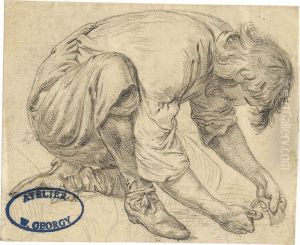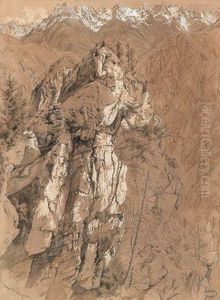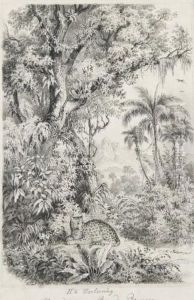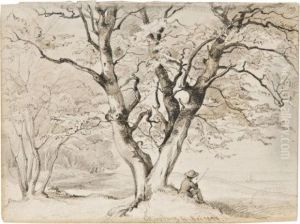Wilhelm Georgy Paintings
Wilhelm Georgy was a German painter and illustrator born on September 5, 1819, in Eisenach, Germany. He is often associated with the Düsseldorf school of painting, which was a leading art movement in Germany during the mid-19th century that focused on detailed narrative works and historical scenes.
Georgy began his art education at the Academy of Fine Arts in Dresden before moving to the Düsseldorf Academy, which was one of the most influential art schools in Europe at the time. There, he was influenced by the teachings of Wilhelm von Schadow, the director of the academy, and other prominent artists such as Carl Friedrich Lessing, who were known for their romantic and historical paintings.
Throughout his career, Georgy was recognized for his genre paintings, which often depicted scenes from everyday life, as well as his historical and religious works. His illustrations were also well-received, and he contributed to various publications of his time, helping to disseminate his work to a broader audience.
Georgy's style was characterized by its attention to detail and its use of vibrant colors. He took great care in rendering fabrics and textures, which added a sense of realism to his work. His historical paintings were praised for their accuracy and their ability to transport viewers to the past, while his genre scenes were often noted for their warmth and charm.
Despite the recognition he received, Georgy's work, like that of many artists from the Düsseldorf school, later fell out of favor as tastes in art shifted towards Impressionism and other modern movements. As a result, his name is not as widely known today as some of his contemporaries.
Wilhelm Georgy died on April 16, 1887, in Düsseldorf, Germany. His contributions to the world of fine art, however, continue to be recognized by art historians and collectors who appreciate the style and period in which he worked. His works can still be found in various art collections and museums around Germany.





